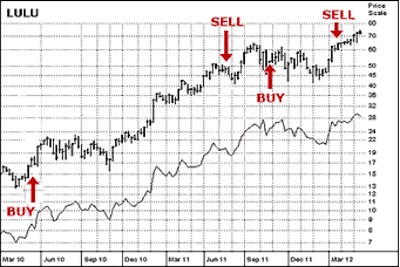Finding Bargains in Value Stocks
Book Value is Important, Too
Two Solid Companies with Good Value
---
Let’s talk about making money. One of the best ways to make money is to ensure that you don’t lose money, or at the least, you don’t lose your shirt. When I recommend a stock to buy, I always make sure the company is solid. A couple of quick ways to test the quality of a company are to check the company’s ability to pay dividends and to check its balance sheet. Today I’ll look at balance sheets - I discussed dividends in last month’s Cabot Wealth Advisory (click here to find my lesson on finding the best dividend-paying companies).
I’m not an accounting professor, so I’ll keep this simple. Every public company issues a balance sheet whenever sales and earnings are reported, which in the U.S. is always quarterly. Every balance sheet is divided into two sections: (1) Assets and (2) Liabilities and Shareholders’ Equity. One of the best ways to ascertain a company’s quality is to compare the book value per share to the stock’s current price.
I find that a lot of investors are unfamiliar with book value and book value per share, so, become familiar with these terms. Book value is shareholder’s equity or retained earnings, which is a number found near the bottom of a company’s balance sheet. Book value per share is simply the shareholder’s equity or retained earnings divided by the number of common shares outstanding.
Is book value per share important? By itself, no. But when compared to the company’s stock price, it’s enormously important. In short, quality companies with low price-to-book value per share ratios (P/BV) have outperformed companies with high ratios for the past three-, five- and 10-year periods.
I recently scoured my databases to find the best companies with low P/BV ratios. I found that 200 companies in my database of 1,000 companies have P/BV ratios of 1.20 or lower. I used several additional criteria to narrow the list of 200 companies by also requiring Standard & Poor’s Earnings/Dividend ratings of B+ or better, low price-to-earnings (P/E) ratios, dividend yields of 1.0% or higher and good earnings prospects for the next 12-month and five-year periods.
My search turned up investment choices quite different from companies appearing in most other investment advisories. I discovered two lesser-known companies with low price-to-book value ratios selling at bargain prices.
I write Cabot Benjamin Graham Value Letter and the secret to my success is finding a stock’s true value. I do this by crunching the numbers ... just as Ben Graham prescribed.
If you follow the numbers, and you hold patiently, profits will be your results!
Speaking of profits, consider Lululemon.
In the April 2010 issue of Cabot Benjamin Graham Value Letter, I identified Lululemon Athletica (LULU) as “an advantageous investment opportunity with exciting growth potential. Buy.” (See first Buy in chart.)
Many of my subscribers had never heard of Lululemon, but those who followed my advice locked in a massive 172% gain when I recommended selling LULU in July 2011. (See first Sell in chart.)
More recently, I advised subscribers to buy LULU again in October 2011. After the stock took off once more, we took profits of 39% after just five months! (See chart again for second Buy and Sell.)
My system is simple: buy when a stock is undervalued, and sell when the stock becomes overvalued. Buy low and sell high - it doesn’t get any simpler!
---
Here are the two lesser-known companies with low price-to-book value ratios selling at bargain prices that I talked about earlier:
Fred’s, Inc. ‘A’ (FRED), founded in 1947 in Memphis, sells discount merchandise from 701 stores in 15 states in the Southeast and Midwest. Fred’s also offers a large selection of generic drugs, which are in high demand and highly profitable. Stores offer household goods, pharmacy items, food, pet supplies, clothing and linens. The average store size is modest at about 14,400 square feet.
U.S. consumers continue to seek bargains when shopping for food, clothing, and household items even though the economy is improving. Major retailers are aggressively cutting prices to compete for each retail dollar. Merchants selling luxury goods and high-end merchandise are producing solid sales, but the stock prices of high-end retailers, such as Saks, Tiffany’s and Coach are too high. Likewise, the stock prices of discount and dollar store companies, such as Ross Stores, T J Maxx, Dollar General and others enjoying strong sales are too high to buy right now.
Enter Fred’s, which is a smaller discount retailer with sales of less than $2 billion, but whose stock price is very reasonable. Same store sales have been flat during recent months, but I expect much better sales growth during the next several quarters as a result of 26 new stores opening in 2011 and 413 stores undergoing renovations during the past two years.
I expect sales to increase 7% and earnings to rise 12% during the next 12 months. The retailer has added pharmacies to half of its stores and is working to do the same in most of its remaining stores. In addition, Fred’s will continue to open many new stores and renovate existing stores.
FRED shares are undervalued at 1.13-times book value and at 13.8-times forward earnings per share. The Standard & Poor’s Earnings/Dividend Rank is B+, and the dividend yield of 1.7% is decent. I expect the strong demand for merchandise offered at low prices to continue during the next several years. I advise buying FRED at or below 14.72 and selling when the stock price hits 21.74. FRED shares are low risk.
Ingles Markets (IMKTA) is a leading supermarket chain with operations in six southeastern states. Founded 49 years ago in Asheville, North Carolina, the company generates $3.6 billion in sales from 203 supermarkets located typically in smaller towns and cities. In addition, the family-run business owns and operates 71 neighborhood shopping centers, 59 of which contain an Ingles supermarket. Ingles also operates 74 in-store pharmacies and 70 on-site gas stations.
Ingles is building a new distribution and warehouse center in Asheville to replace its outdated (and only) facility. The new center will be completed soon and will increase efficiency and add to profitability in 2012.
The company is expanding its selection of private label items under the Laura Lynn name. Private label goods are noticeably more profitable. The company is enjoying a surge in demand from consumers who are opting to buy groceries and cook at home rather than spend extra money to dine at restaurants.
The transition to the new distribution facility and higher food costs will hold back earnings growth in 2012, but I expect 14.5% growth in future years. Cash flow of more than $5.00 per share is more than enough to expand Ingles’ store count, and at the same time, pay down the high debt load to reduce interest expense.
The price to earnings ratio (P/E) is realistic at 9.1-times current EPS, and the 3.8% dividend yield and price to book value ratio (P/BV) of 0.87 make Ingles Markets a very attractive investment opportunity. IMKTA shares are medium risk. The Standard & Poor’s Earnings/Dividend Rank is B+.
I will continue to follow Fred’s and Ingles, as well as many other undervalued, high-quality companies in my Cabot Benjamin Graham Value Letter. My next issue, coming soon, will focus on my new recommendations with low P/BV ratios. I hope you won’t miss it!
Sincerely,
J. Royden Ward
Editor of Cabot Benjamin Graham Value Letter
Editor’s Note: You can find additional stocks selling at bargain prices in our new and improved Cabot Benjamin Graham Value Letter. Find out why our subscribers are showering us with compliments!
In every issue, you’ll find Roy’s legendary Maximum Buy and Minimum Sell Prices for over 250 well-known stocks. Click here to get started today!

